Our Origins
The Moriori story of origin, like many stories of origin across Te Moana-nui-a-Kiwa (the great Pacific Ocean) starts with reference to Rangi and Papa, sky father and earth mother. The Moriori story refers to ‘Rangitokona’ as holding up the sky and propping up the dawn, not dissimilar to some Māori stories such as Kāi Tahu reference to ‘Tokona te Raki (Rangi)’ which refers to propping up the sky and Ngāti Kahungunu reference to ‘Pou-a-Rangi’ as pillars holding sky and earth apart.
According to Moriori tradition, the first ancestors arrived directly from Eastern Polynesia to Rēkohu via Rongomaiwhenua and Rongomaitere. Later waka (ocean voyaging craft) came from mainland Aotearoa me Te Waipounamu about 500 to 600 years ago and are recognised as a second line of descent from ancestors such as Kahu and Moe. Some stayed, settled and intermarried with the resident descendants our founding Polynesian ancestors from whom all Moriori descend today.
Prior to colonisation, the people we now collectively identify as Moriori identified by various hapū (kinship groupings).
Like many Polynesian cultures, those earliest Moriori ancestors adapted to this new environment and, in doing so, evolved their unique language, names and customs over a period of about 600 years, including their defining peace covenant. This meant that, when Ngāti Mutunga and Ngāti Tama invaded in late 1835, it was a clash of cultures between an intergenerational war mongering people and intergenerational pacifists, leading to the genocide and enslavement of a people whose leaders chose not to fight.
